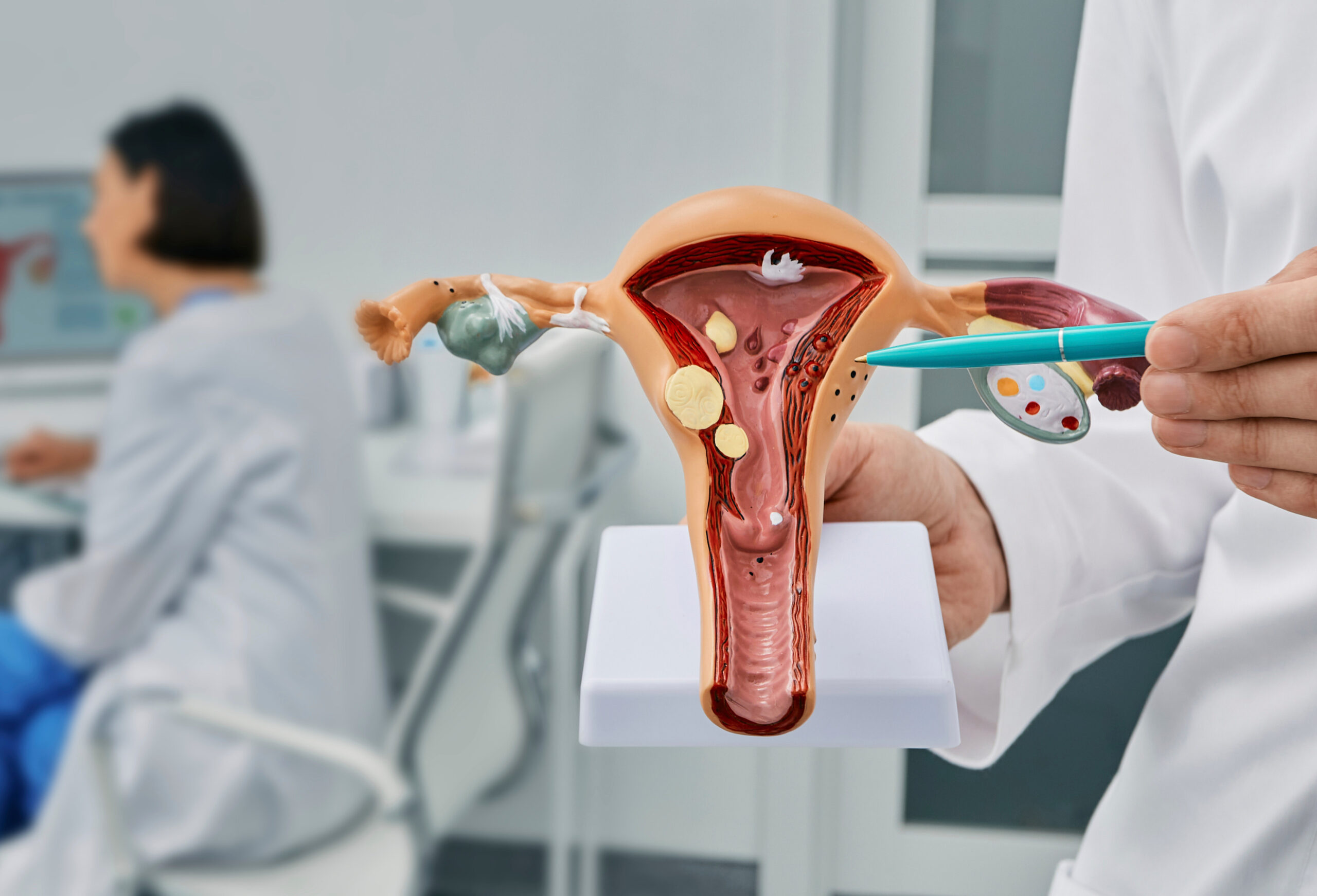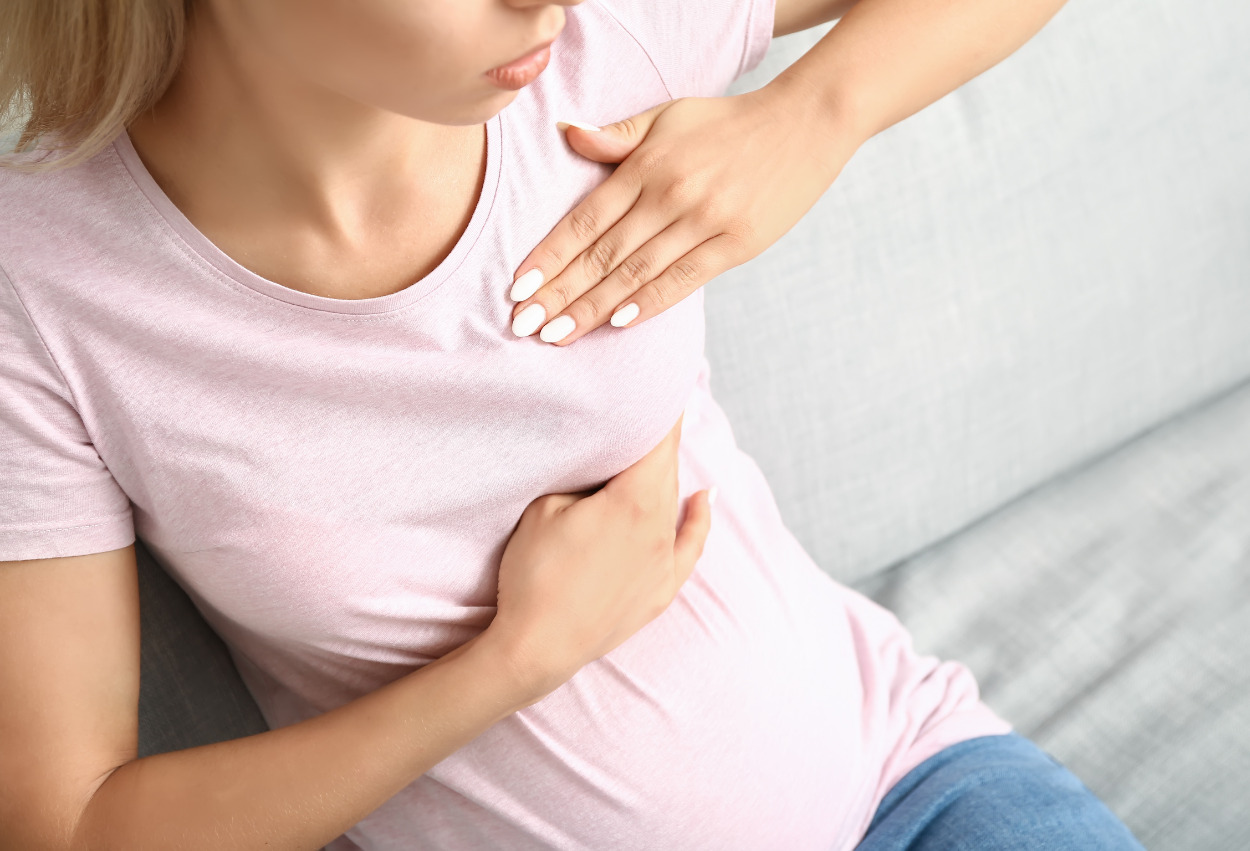Dr Ankita S
MBBS, MS, DNB OBGY
One of the distinctive features for identifying polycystic ovary syndrome is the use of ultrasound to detect the presence of numerous small cysts, clustered in the ovaries. However, it’s important to note that the presence or absence of these cysts alone does not confirm the presence of PCOS. There has been considerable speculation about the distinctions between other ovarian cysts and ovarian cysts developed due to PCOS/PCOD condition. In this blog, we will delve into the various types of cysts found in the ovaries and examine how they differ from cysts associated with PCOS from a scientific perspective.
What are Ovarian Cysts and What is their association with PCOS?
Fluid-filled sacs known as ovarian cysts can emerge in your ovaries. These cysts have the potential to contain various materials and can develop within the ovaries themselves. The ovaries, an integral part of the female reproductive system, have a vital function in the process of ovulation. Approximately a few weeks prior to the onset of your menstrual period, they generate and release a single egg. Although certain ovarian cysts may cause discomfort, others are benign and devoid of pain.
Hormonal imbalance levels can result in anovulation, the absence of ovulation. When ovulation fails to occur, the ovaries can develop multiple small cysts. These cysts produce hormones known as androgens. Women diagnosed with PCOS frequently exhibit elevated levels of androgens, which can lead to further complications in their menstrual cycle and contribute to the manifestation of various PCOS/PCOD symptoms.
The primary distinction between ovarian cysts and Polycystic Ovarian Syndrome cysts lies in the significant hormonal imbalance associated with PCOS/PCOD, which is not typically observed with ovarian cysts. It is worth noting that women can have multiple ovarian cysts without being diagnosed with PCOS.
The so-called “cysts” in PCOS are not typical cysts but rather immature follicles that accumulate in the ovaries and do not undergo ovulation. The American Society for Reproductive Medicine (ASRM) suggests that the definition of PCOS should include meeting at least two out of the following three criteria: (i) oligo- and/or anovulation, (ii) clinical and/or biochemical signs of hyperandrogenism, and (iii) polycystic ovaries observed through ultrasonography, while also excluding related disorders. Therefore, it is possible to receive a diagnosis of PCOS without having any actual “cysts” present. In some cases, irregular periods and acne alone can be sufficient for a PCOS/PCOD diagnosis.
What are the other Types of Cysts Present in Ovaries?
Ovarian cysts come in various types, and they often present similar symptoms. The majority of ovarian cysts are functional, meaning they form as a result of hormonal changes during the menstrual cycle. The four main types of ovarian cysts are as follows:
- Functional ovarian cysts: These are the most common type and are often found in women of childbearing age who experience issues with ovulation. There are two subtypes:
- Follicular cysts: Occasionally, a follicle can enlarge and become filled with fluid. This type commonly occurs in women undergoing infertility treatment.
- Corpus luteum cysts: These cysts form when the corpus luteum fills with fluid or blood. A blood-filled cyst of this kind is sometimes referred to as a hemorrhagic cyst.
- Dermoid cysts: Dermoid cysts are more common in younger women and can get fairly big. They frequently include uncommon components including fatty tissue, fragments of bone or teeth, and hair. The cells that produce eggs in the ovary give rise to these cysts. Dermoid cysts may include a variety of tissue since an egg has the capacity to develop into any sort of cell. Dermoid cysts can appear in both ovaries in roughly one in ten cases, and they may run in families.
- Cystadenomas: The cells that cover the outer part of the ovary give birth to these cysts. Serous cystadenomas, which are filled with thin fluid, and mucinous cystadenomas, which are filled with thick, mucous-like fluid, are two of the various subtypes. Instead of developing inside the ovary, these cysts frequently have a stalk that attaches them to the organ. While the majority of cystadenomas are benign, there is a chance that some could develop into cancer. Some cystadenomas can get very large.
- Endometriomas or Chocolate cysts: One of the intriguing types of cysts is ovarian endometriomas, also known as “chocolate cysts.” These cysts are filled with menstrual blood, and the fluid within them bears a resemblance to chocolate syrup. Unlike regular menstrual flow in the uterus, ovarian endometriomas develop within the ovaries. They are indicative of endometriosis, a condition characterised by the migration of endometrial-like tissue outside the uterus. These cysts can cause uncomfortable symptoms, but healthcare providers can assist in managing them. In certain instances, the removal of these cysts may be the most suitable course of action.

Are there any serious implications of any of these Cysts?
In general, ovarian cysts do not pose severe implications. The majority of them are benign and often resolve on their own without intervention. While it is rare, certain types of cysts carry a higher risk of malignancy or complications. only about 1% of ovarian cysts are malignant. to minimise the risk of complications, your doctor can monitor any suspicious cysts closely. When necessary, ovarian cysts can be surgically removed through a procedure called ovarian cystectomy. In most cases, this surgery can be performed laparoscopically, unless the cyst is exceptionally large or suspected to be cancerous.
In the case of ovarian endometriomas, also known as chocolate cysts, having this condition increases the likelihood of experiencing unpleasant symptoms associated with endometriosis. these cysts may cause pelvic pain, raise the risk of ovarian cancer (although it is rare), and potentially make it more difficult to conceive. while the occurrence of ovarian cancer in individuals with ovarian endometriomas is uncommon, it is important to be aware that these cysts have the potential to become cancerous.
Conclusion
Cystercare offers a comprehensive approach to PCOS management, where our team of dedicated care managers collaborates closely with clients throughout their journey. Our skilled and highly specialised doctors provide meticulous care and a range of treatment options tailored to meet the needs of each individual patient.
References
1. https://www.mayoclinic.org/diseases-conditions/pcos/diagnosis-treatment/drc-20353443
2. https://my.clevelandclinic.org/health/diseases/22004-ovarian-endometrioma#:~:text=Ovarian%20endometriomas%2C%20or%20%E2%80%9Cchocolate%20cysts,provider%20can%20help%20you%20manage
3. Scurry, J., Whitehead, J., & Healey, M. (2001). Classification of Ovarian Endometriotic Cysts. International Journal of Gynecological Pathology. https://doi.org/10.1097/00004347-200104000-00006.
4. Ory, H. (1974). Functional ovarian cysts and oral contraceptives. Negative association confirmed surgically. A cooperative study.. JAMA. https://doi.org/10.1001/jama.228.1.68
5. Pryor, S., Lewis, J., Weaver, A., & Orvidas, L. (2005). Pediatric dermoid cysts of the head and neck. Otolaryngology–Head and Neck Surgery. https://doi.org/10.1016/j.otohns.2005.03.005
Frequently Asked Questions
Ovarian cysts refer to enclosed, sac-like structures found within the ovary, typically measuring more than 3 cm in diameter and containing either liquid or semisolid substances. Their sizes can range from a few centimetres to as large as a sizable melon.
Yes there are different types of ovarian cysts
1.Functional ovarian cysts
2.Dermoid cysts
3.Cystadenomas
4.Endometriomas or Chocolate cysts
1.The primary symptom of a cyst causing discomfort is lower abdominal or pelvic pain, commonly experienced.
2.Painful menstrual cycles or alterations in menstrual patterns.
3.Bowel-related pain or pressure on the bowels.
4.Pain during sexual intercourse (dyspareunia).
5.Frequent and urgent urination.
6.Changes in appetite, feeling full quickly, or a sense of bloating.
7.A swollen or distended abdomen.
8.Difficulty conceiving (becoming pregnant), which may be associated with endometriosis.
The likelihood of ovarian cysts being cancerous varies among individuals and depends on multiple factors, including the type of cyst, age, family history, and the presence of concerning symptoms or features on imaging.
YES,Ovarian cysts are a frequently occurring condition, and they can affect many women during various stages of their lives. Nevertheless, the occurrence and risk factors associated with ovarian cysts can vary significantly depending on age groups and individual characteristics.
Dr Ankita S
MBBS, MS, DNB OBGY
Varshini
M.Tech Food Biotechnologist
Varshini
M.Tech Food Biotechnologist
Related Blogs
- How to prevent Prediabetes from Turning into DiabetesSeptember 19, 2023
- Unravelling the connection: insulin Resistance and PCOSSeptember 8, 2023







